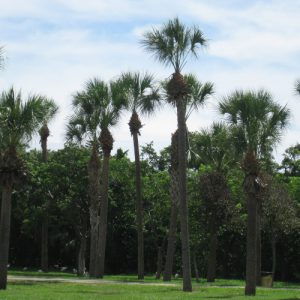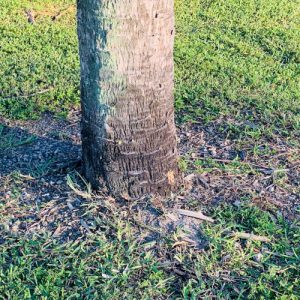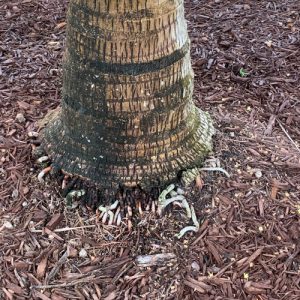South Florida is known for its lush, tropical looking palms. To keep them looking their best, most palms need timely maintenance, especially fertilization. Are your palms yellow, stunted and/or lacking vigor? If so, here are some timely tips to restore their health.

Palms are more like turf than trees
Most species of palms need routine fertilization when planted in South Florida’s high pH lime rock soils. Do not use a turf fertilizer on your palms because the mix of nutrients is not appropriate. University of Florida IFAS recommends using a controlled release palm special fertilizer. 8-2-12+4Mg is one example. Read the label to make sure the product features slow release nitrogen, potassium and magnesium with micronutrients in a water soluble form such as a sulfate or chelate (iron only). Spread 15 pounds of 8-2-12 +4Mg per 1000 square feet of plant bed evenly around the base of your palm(s) from the trunk out to the drip line. Do this four times per year (once every three months).
After applying the fertilizer
Immediately after application, wet the fertilizer granules down thoroughly to solubilize them. If the fronds on the top of your palm are stunted and/or frizzled they may also benefit from a head drench using a micronutrient product called “Tech Mangam”. Most arborists can provide this service. Recovery may take 3 months or more. Severely yellow and/or stunted palms may not recover and will likely need to be removed and replaced.
Pruning practices
Palms benefit from other proper maintenance practices that homeowners and property managers should know about. Avoid over pruning palms. Removing too many green fronds reduces photosynthesis and the amount of food the tree can manufacture to sustain itself. Repeated over pruning all too frequently leads to early decline. It also predisposes the bud or growing point of the palm to damage by high winds.

Contrary to the pruning practices some landscape maintenance companies provide, green fronds originating at or above the horizontal (e.g. 9:00-3:00 positions on a clock) should not be removed.
Additional recommendations
Make sure your palms are not planted or mulched too deeply and avoid overwatering. These practices can lead to root suffocation and decline. The base of the trunk should flare out and be visible at all times. Do not let mulch come in contact with the trunk. If the base of your palm trunk looks like a telephone pole in the ground, remove some of the mulch and/or soil to expose the flare.


By following these simple guidelines–planting at the correct depth, not over mulching or over watering, providing timely fertilization with a palm special product and not removing too much green foliage, chances are good that your palm(s) will be healthy for years to come.
 1
1
